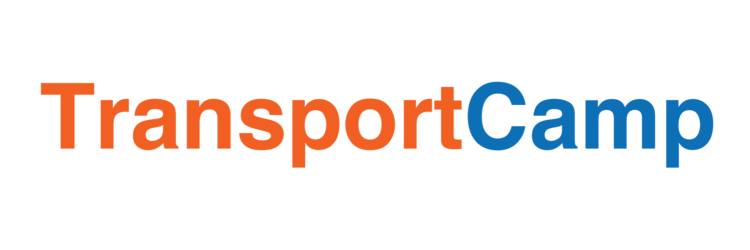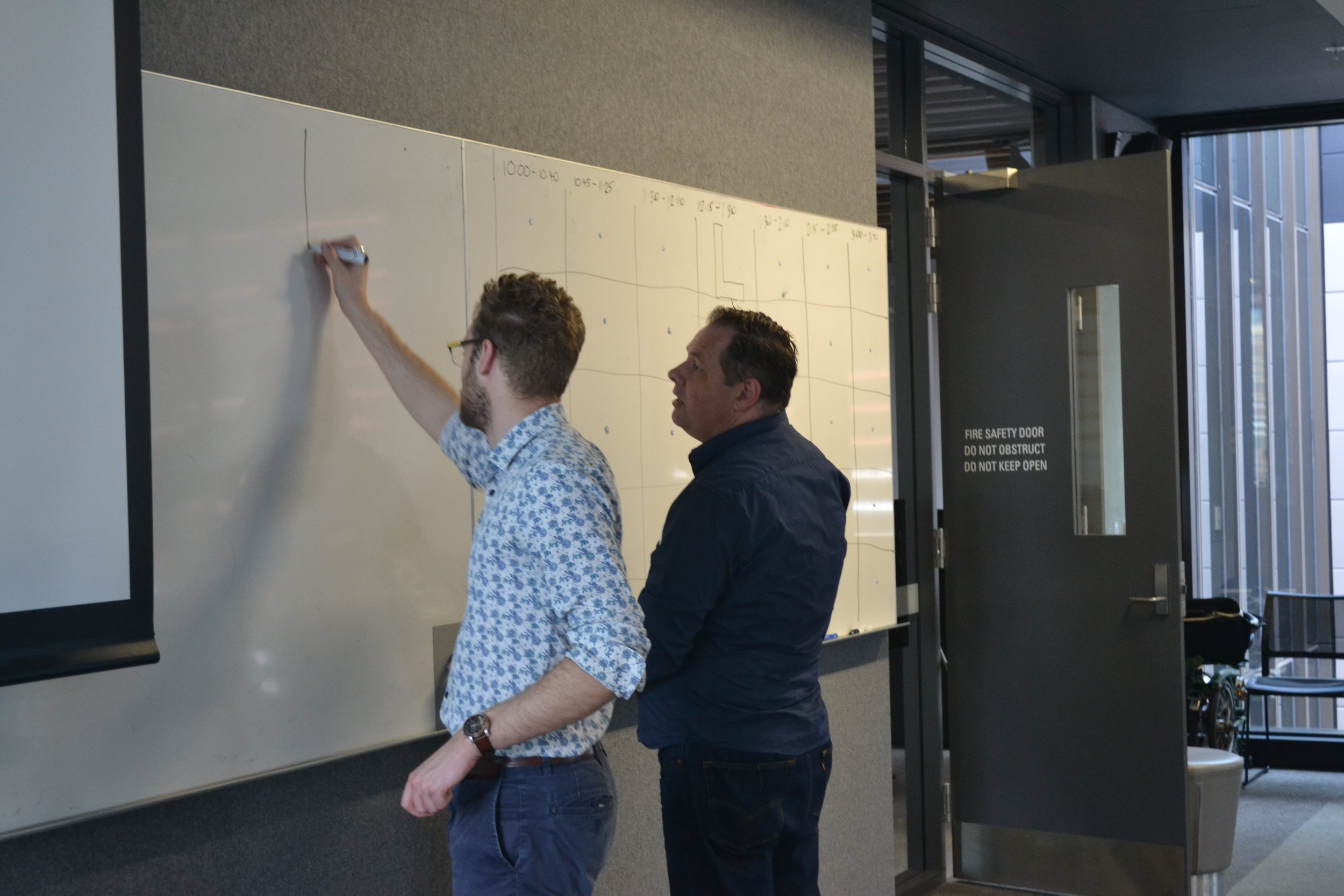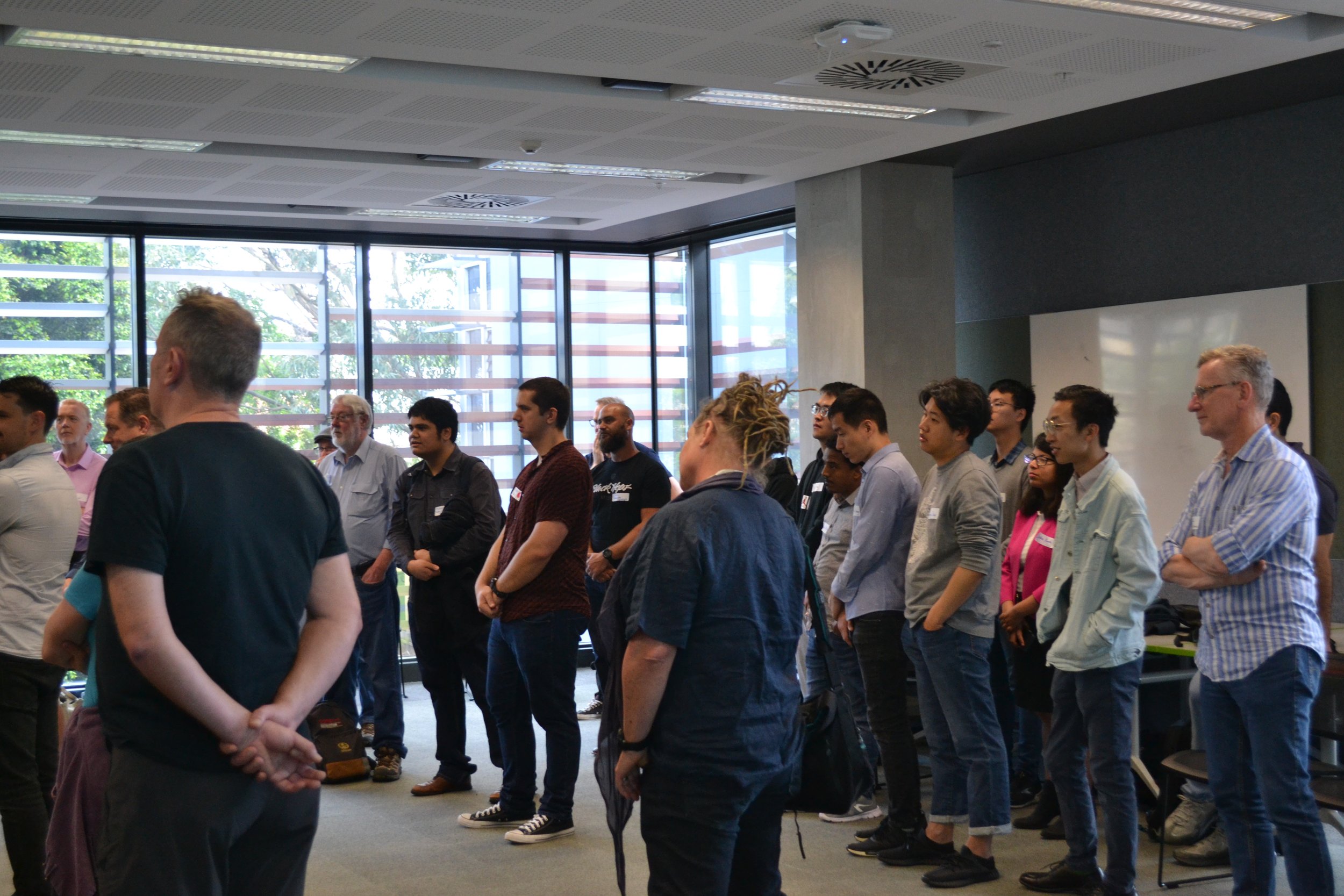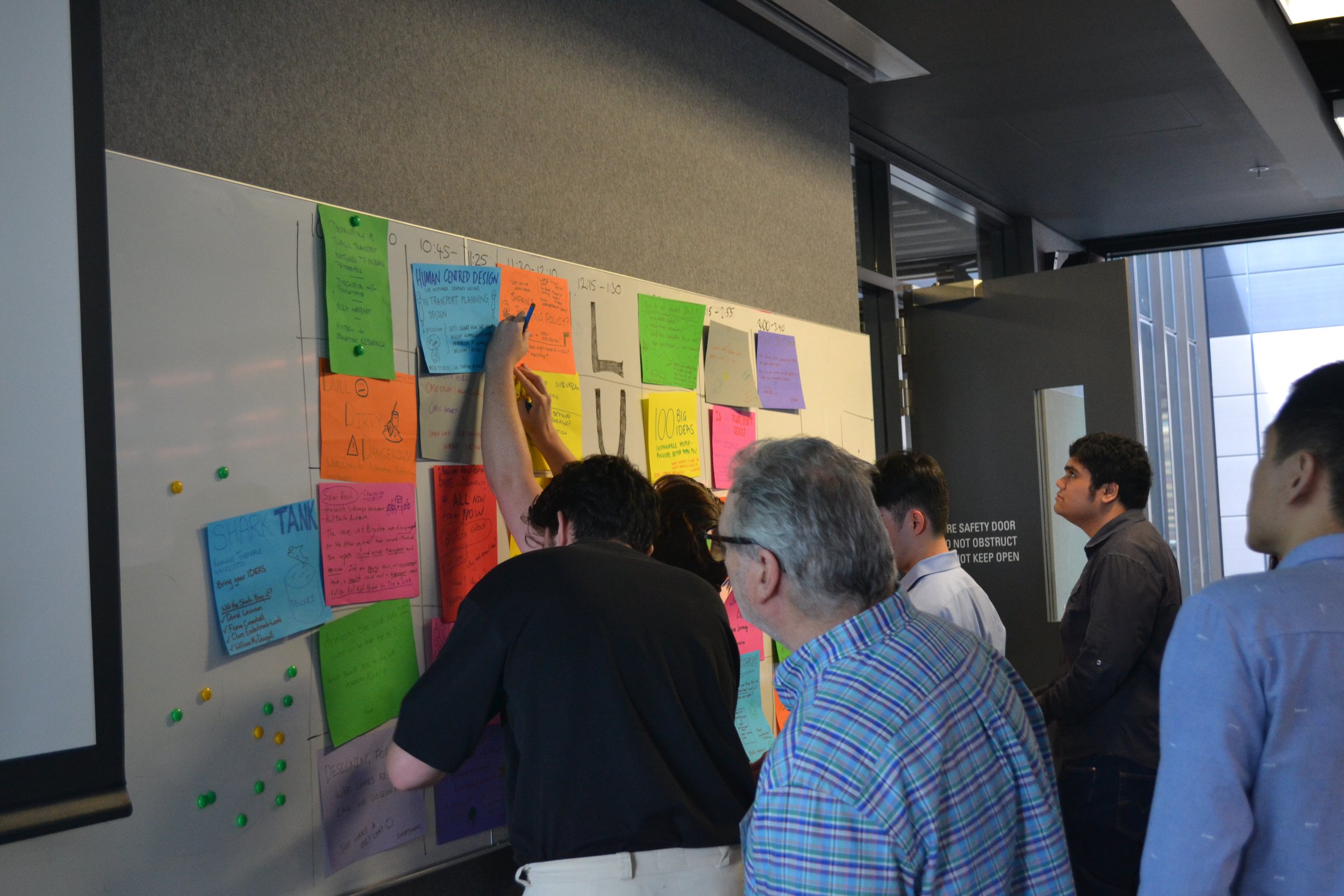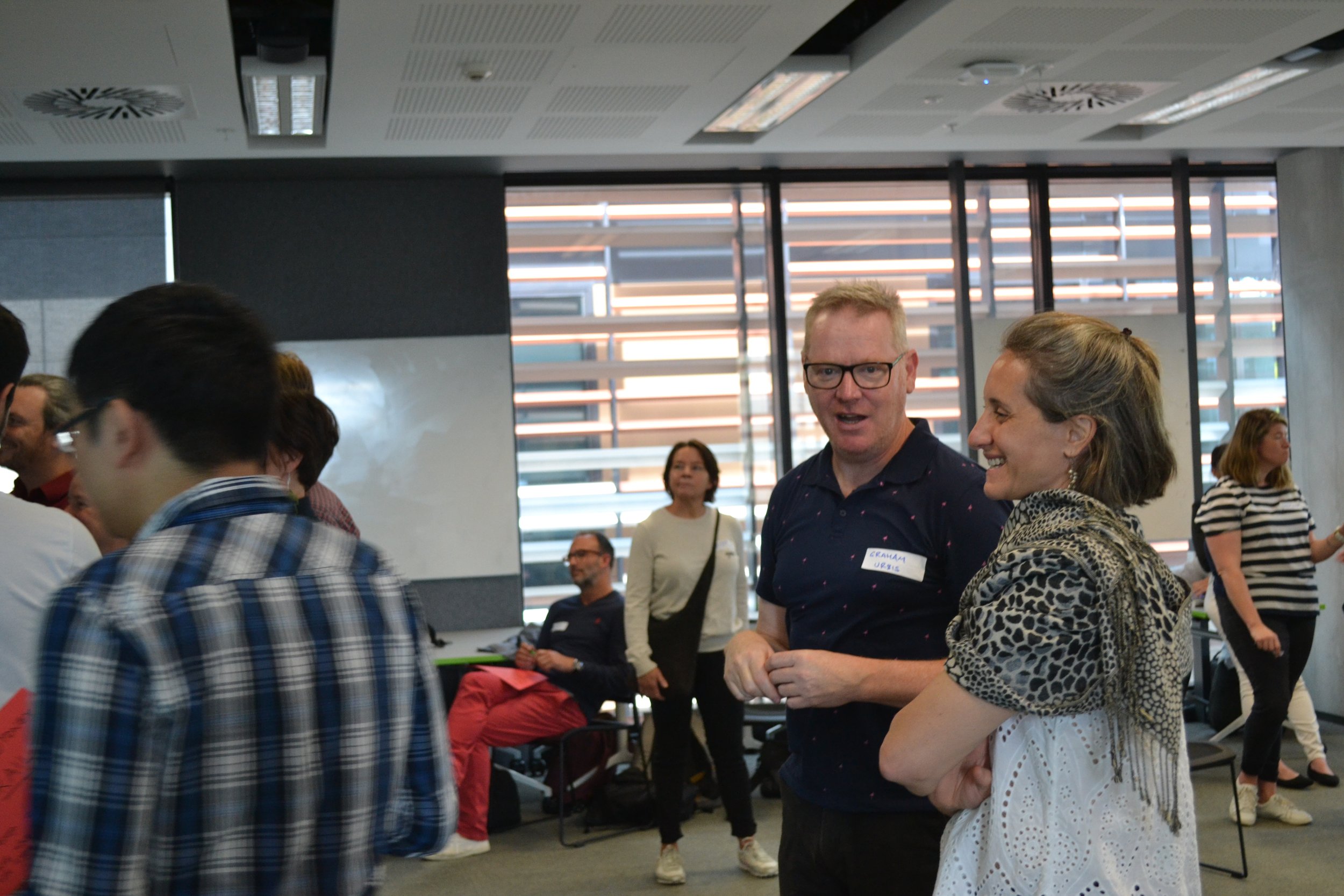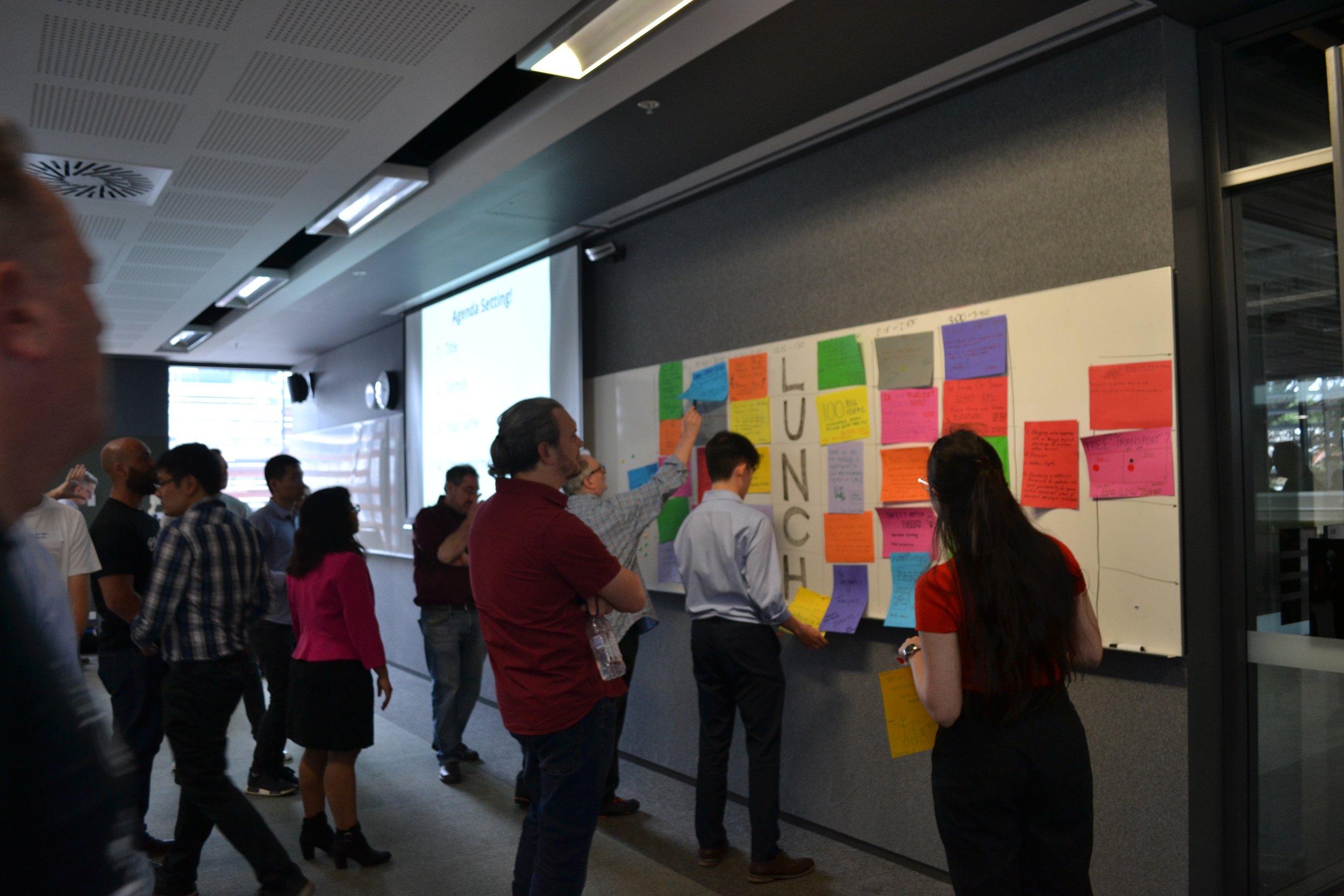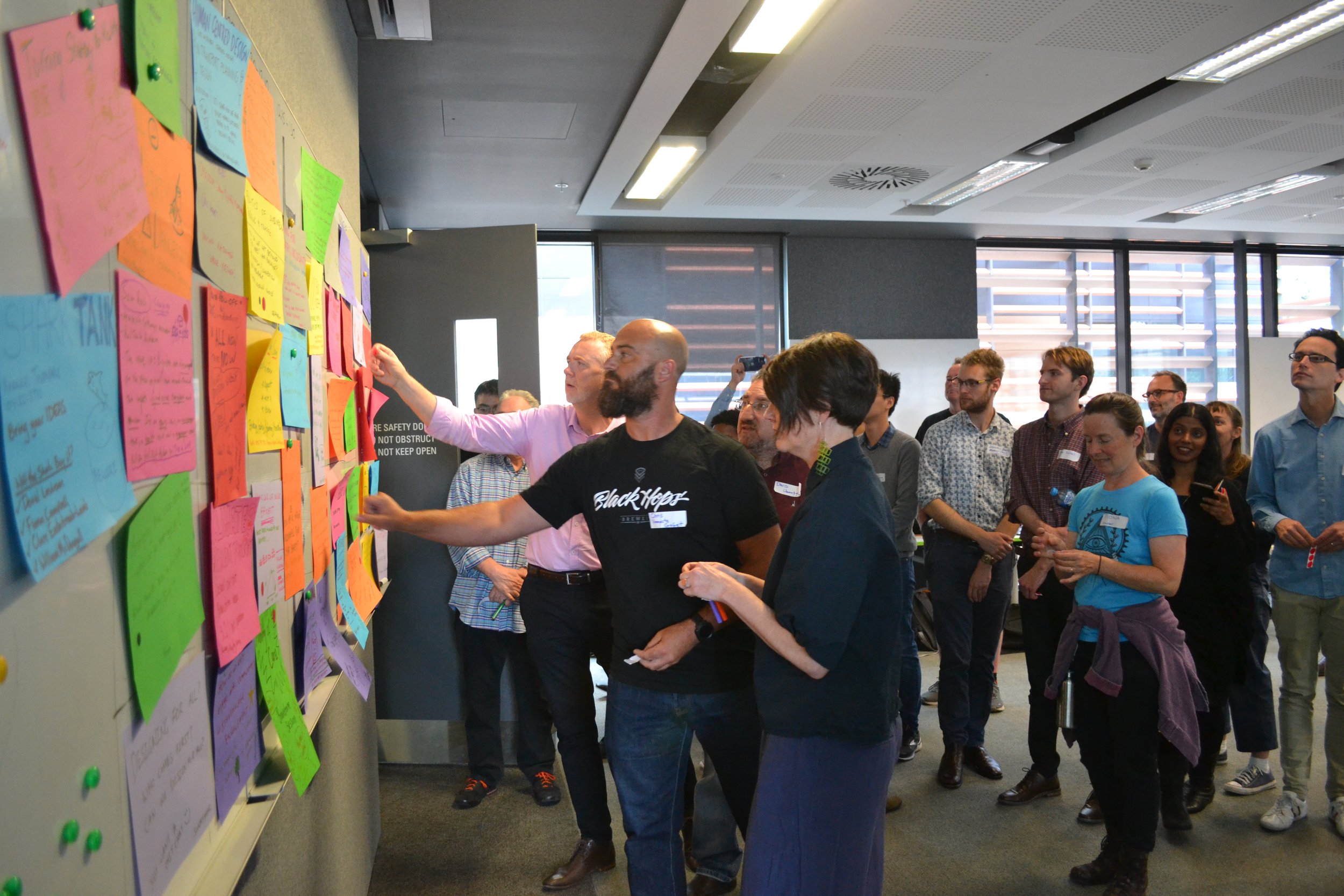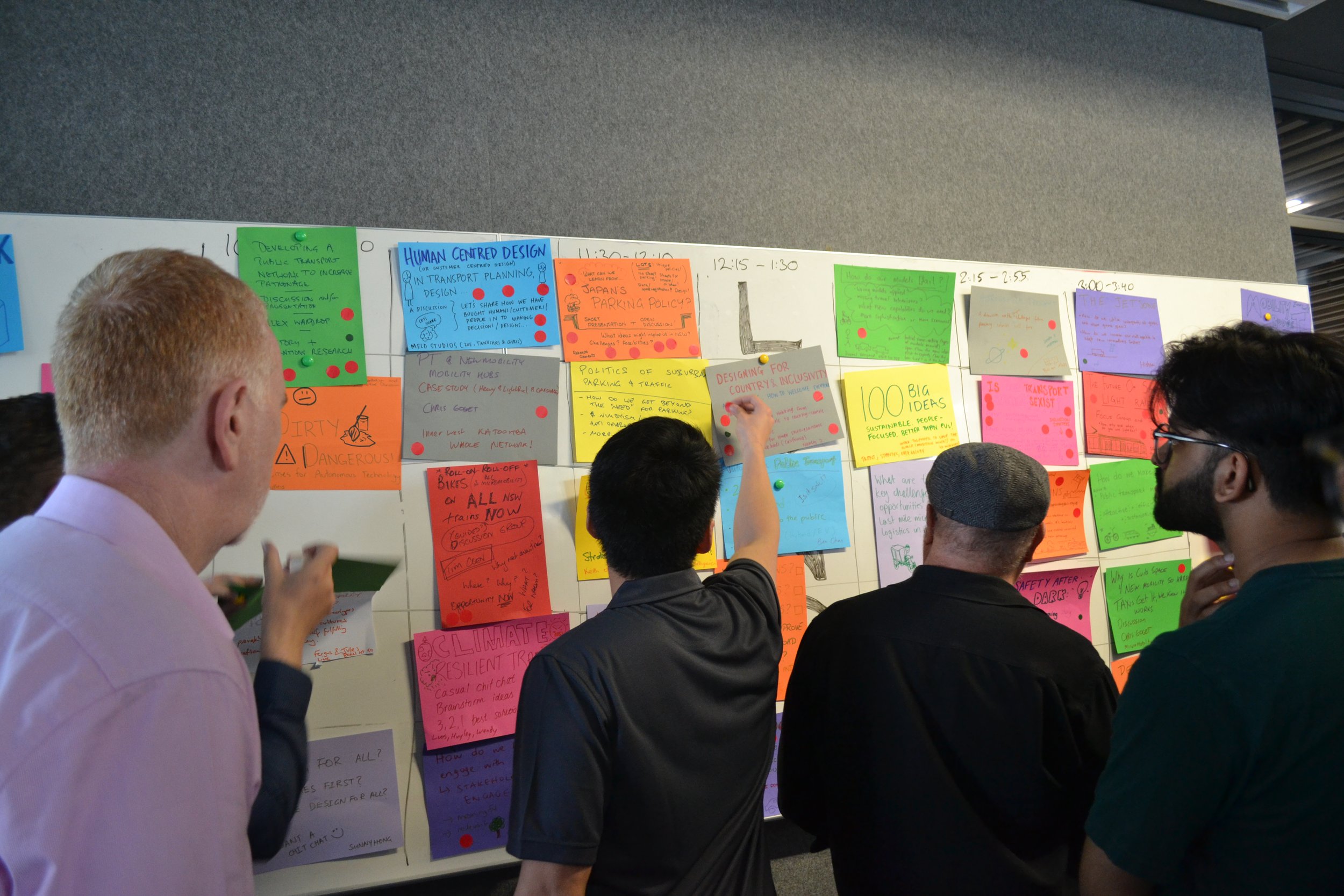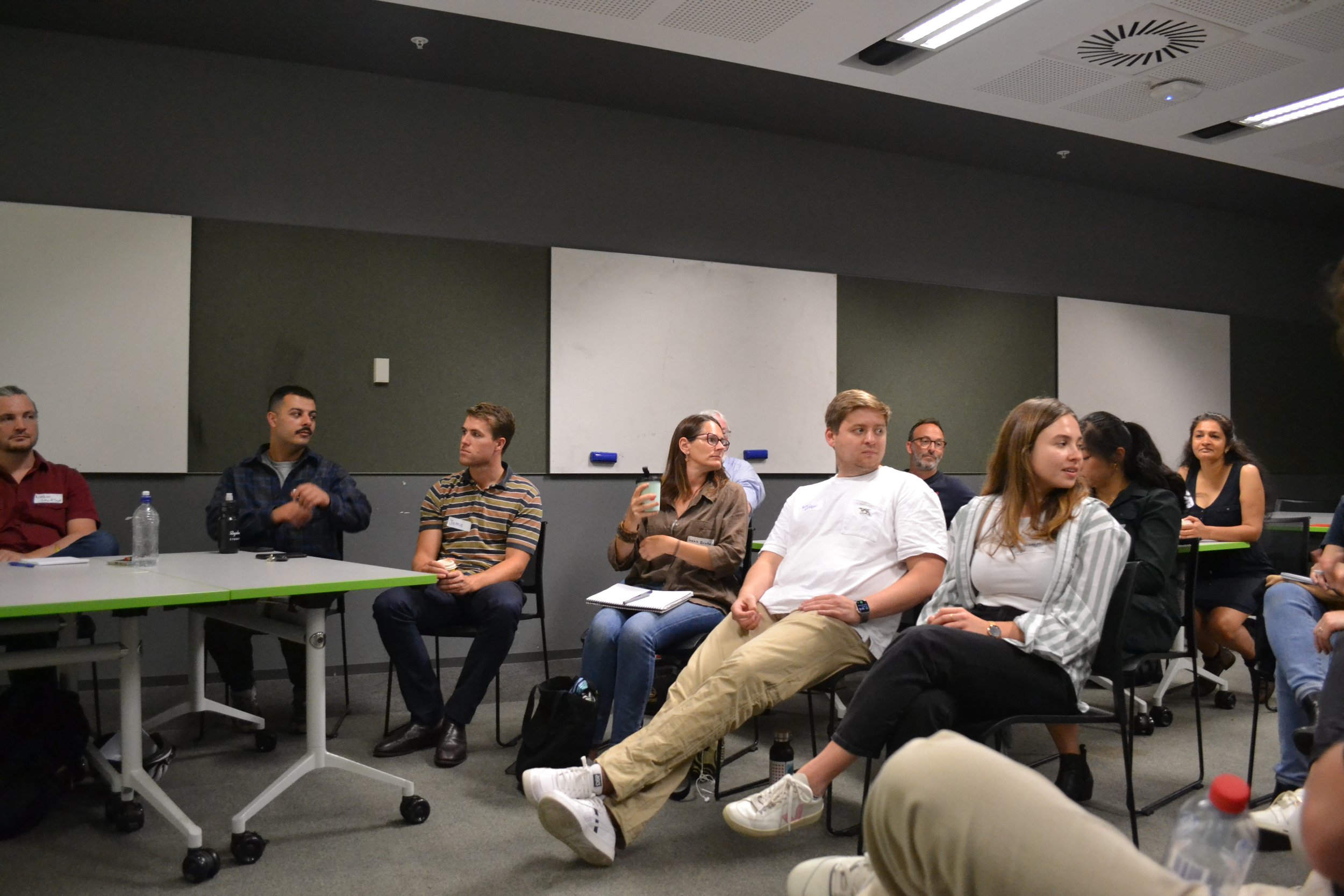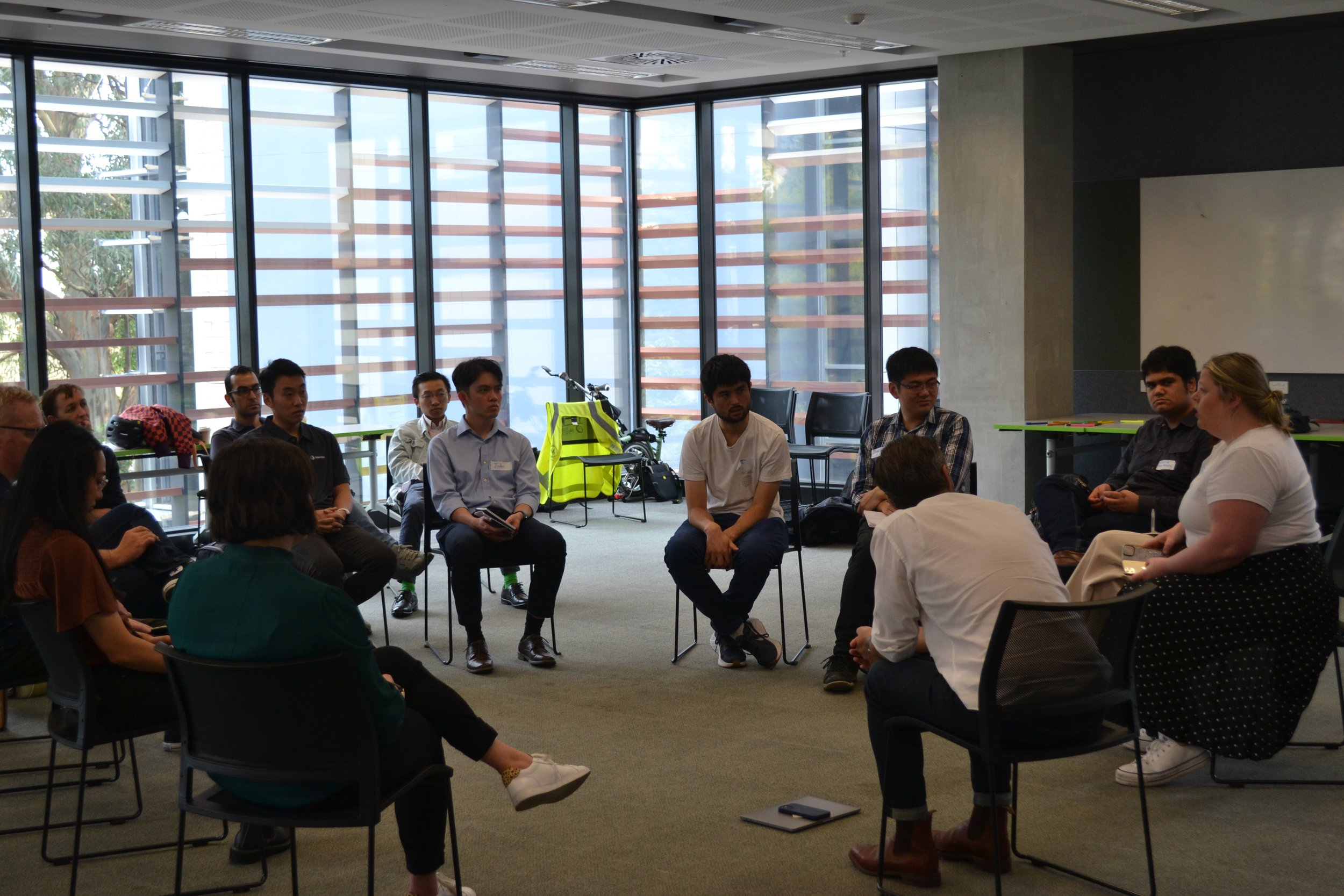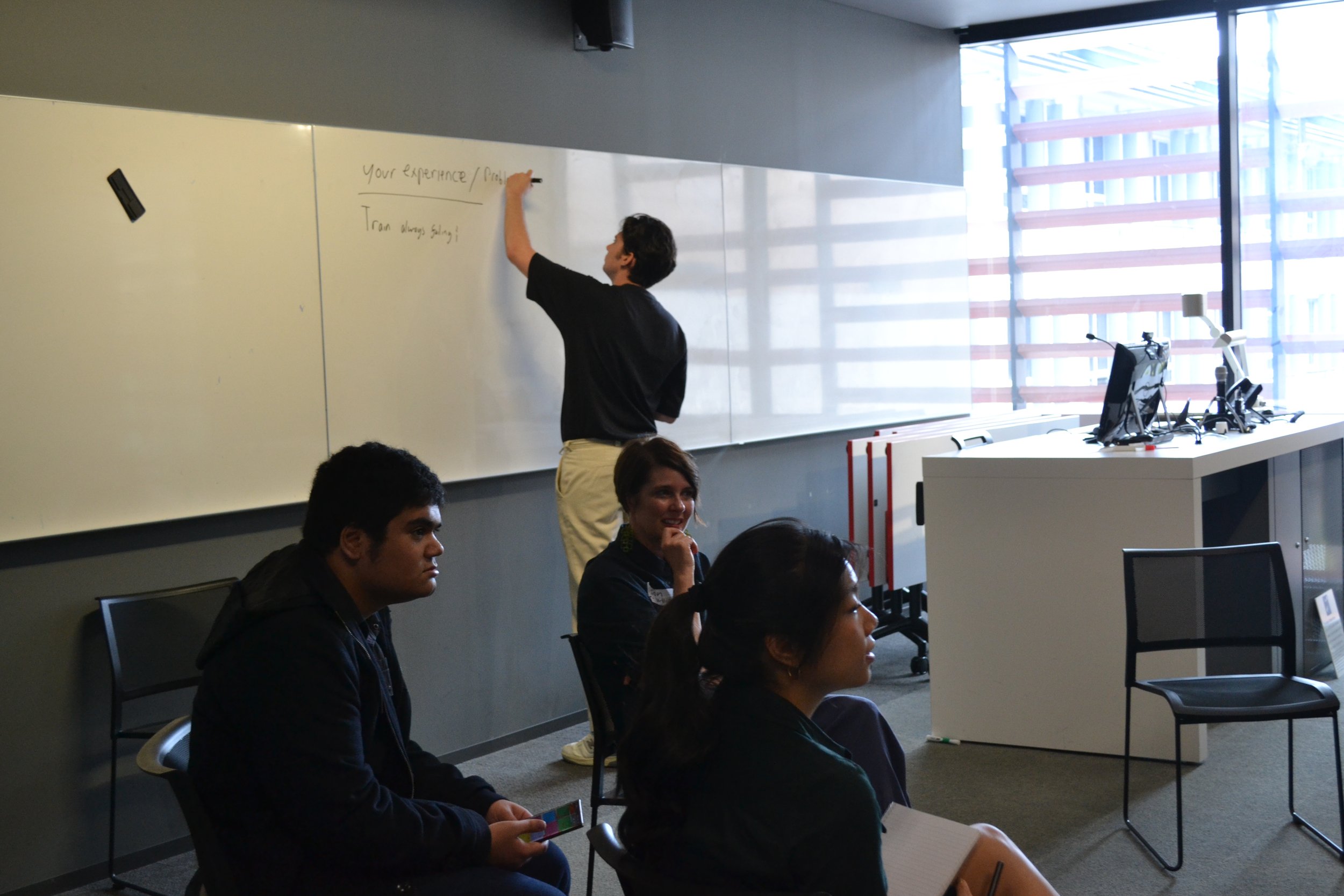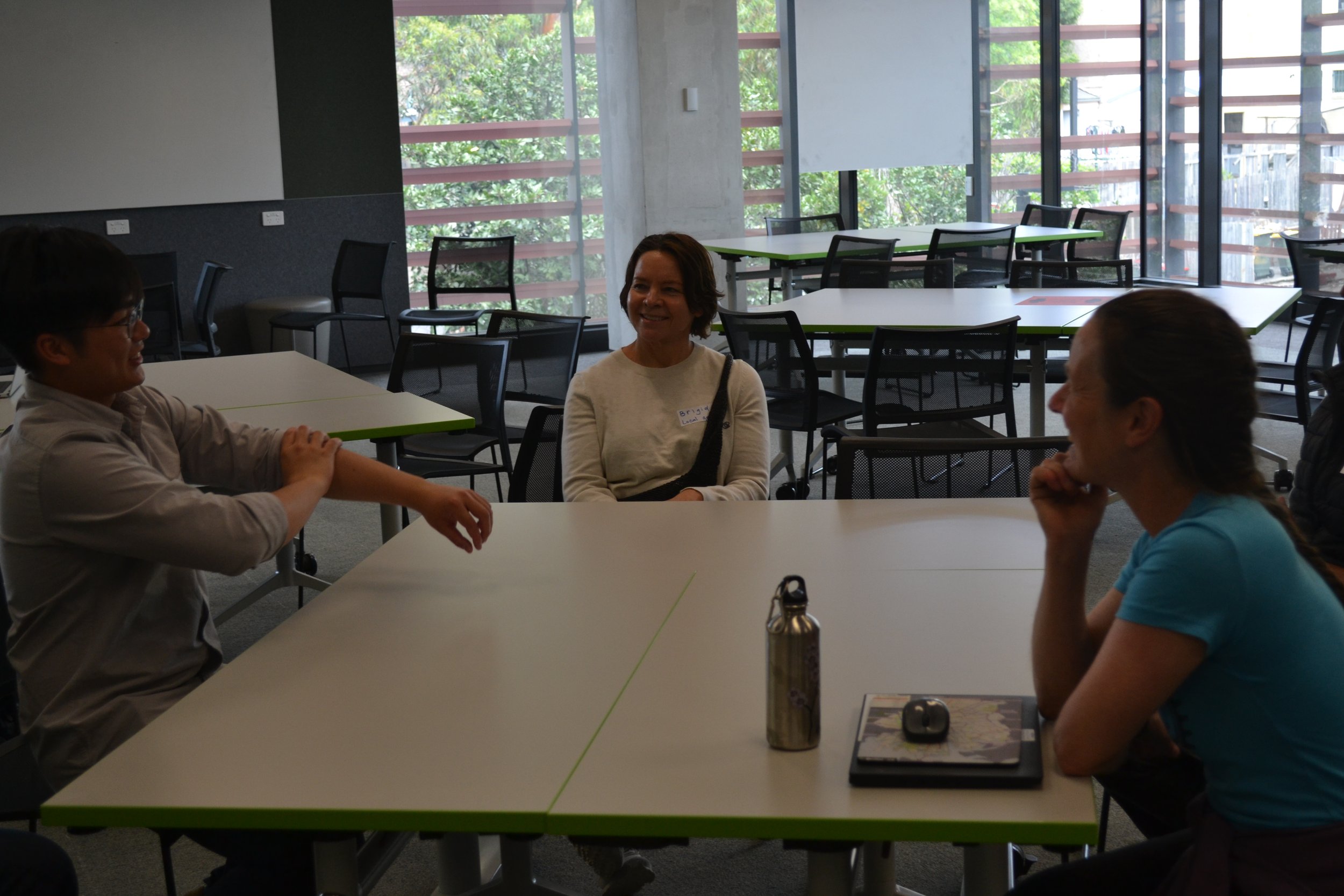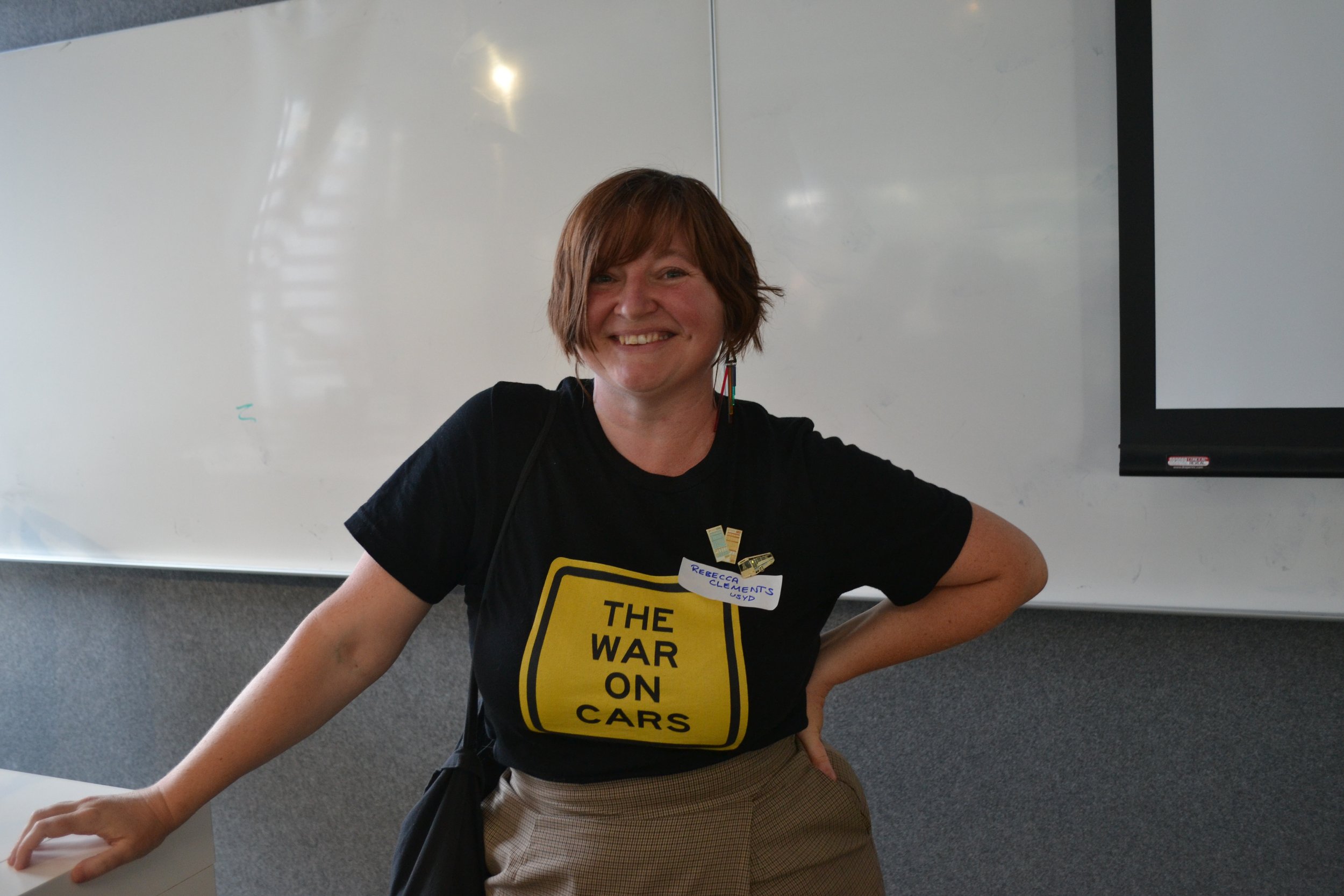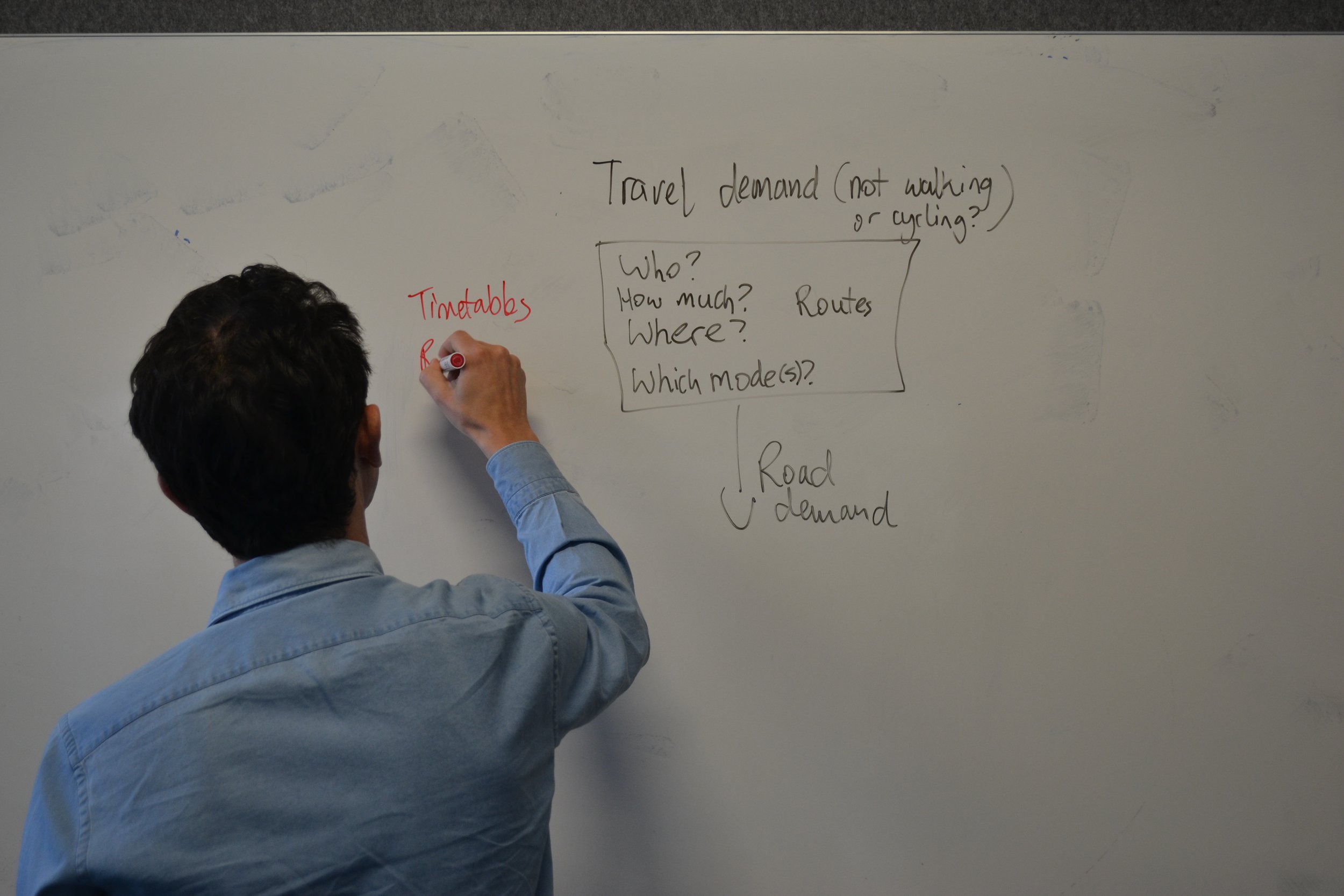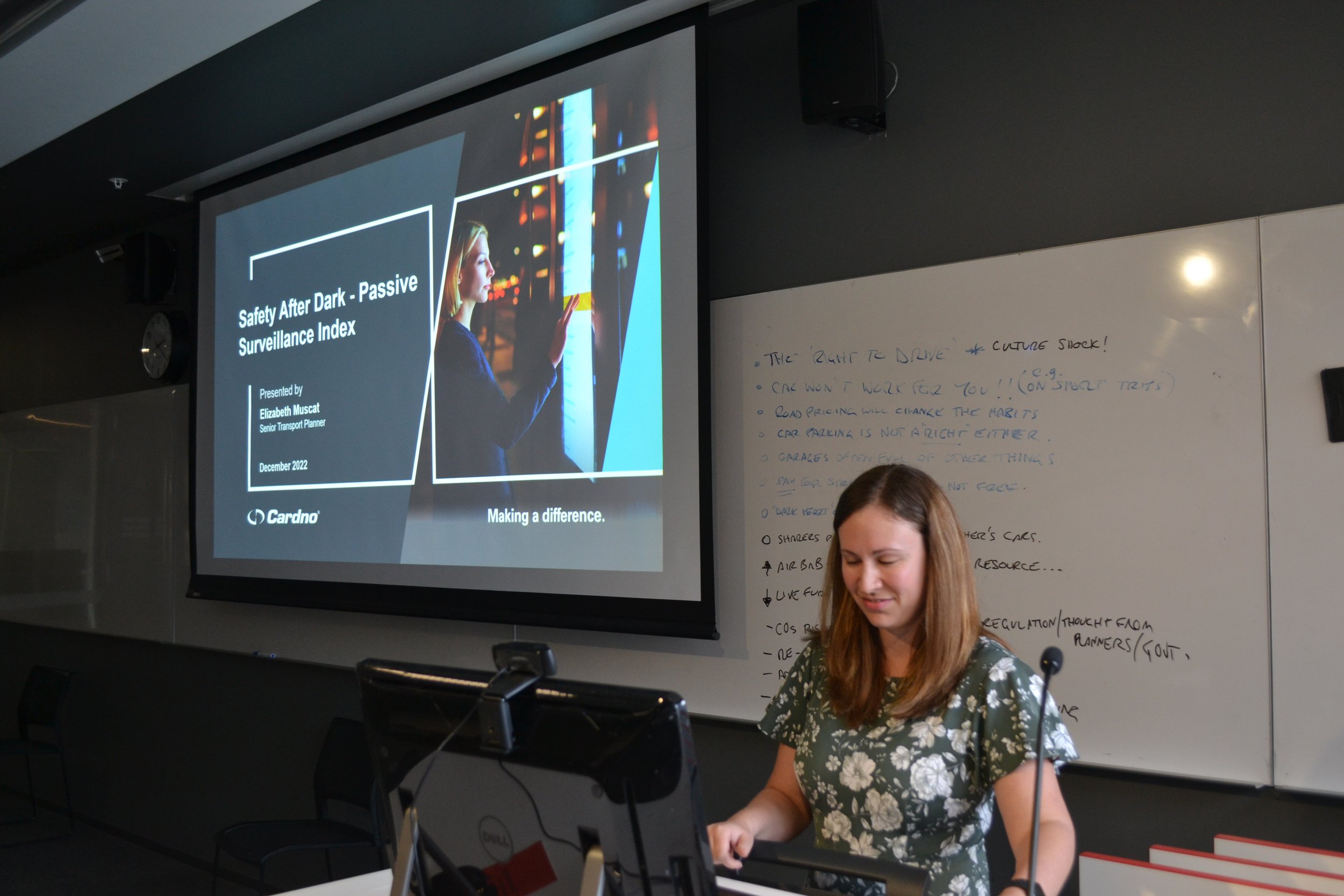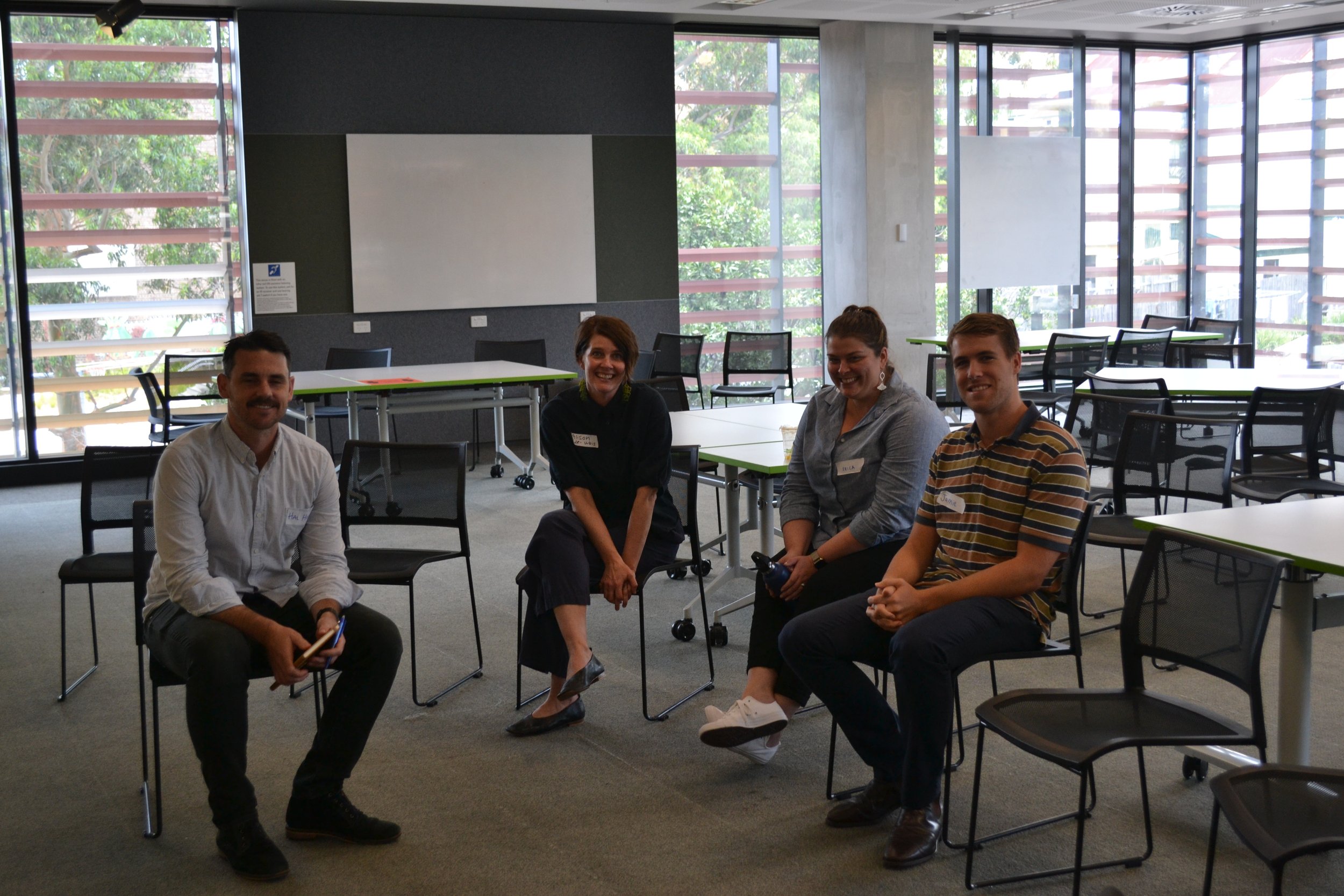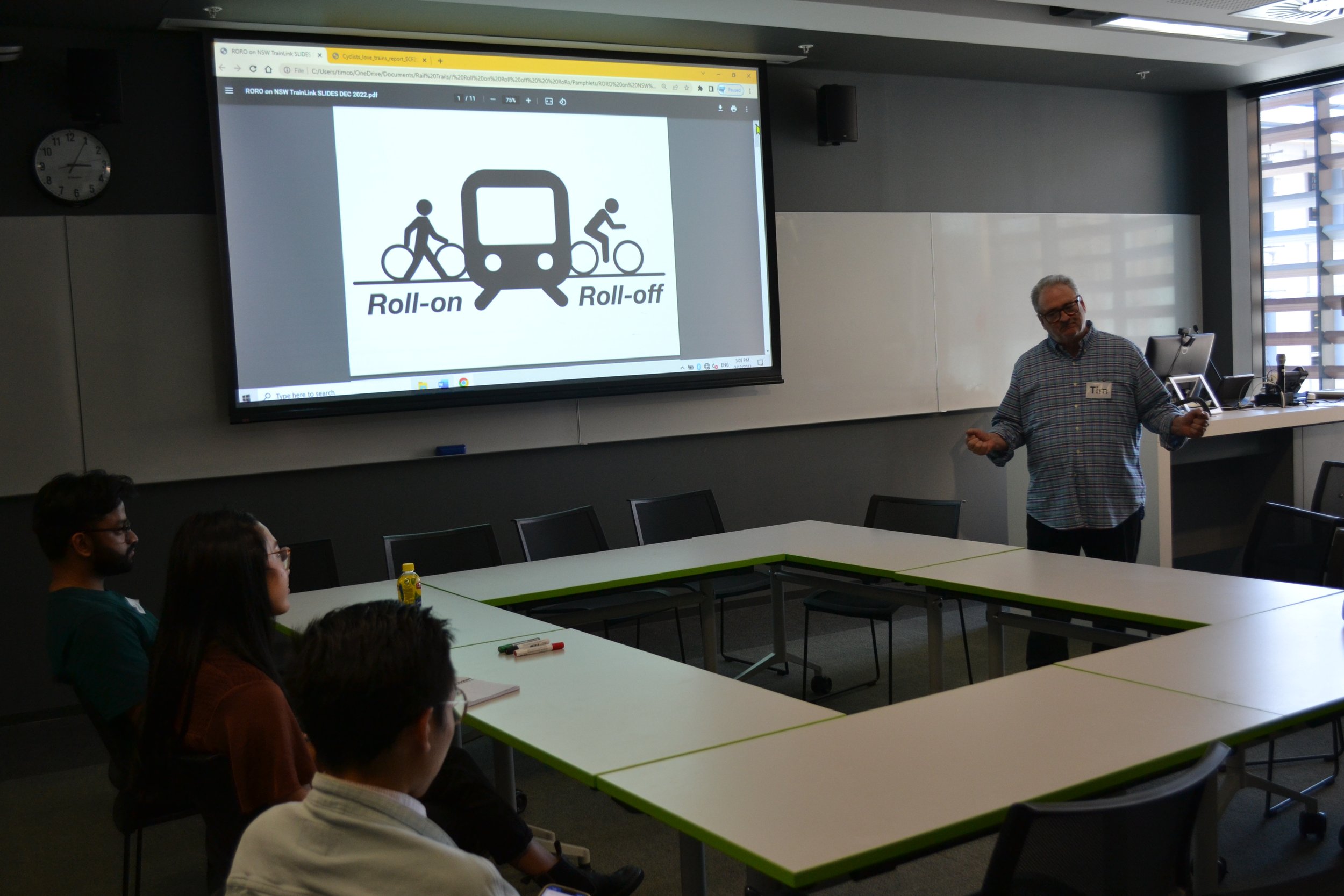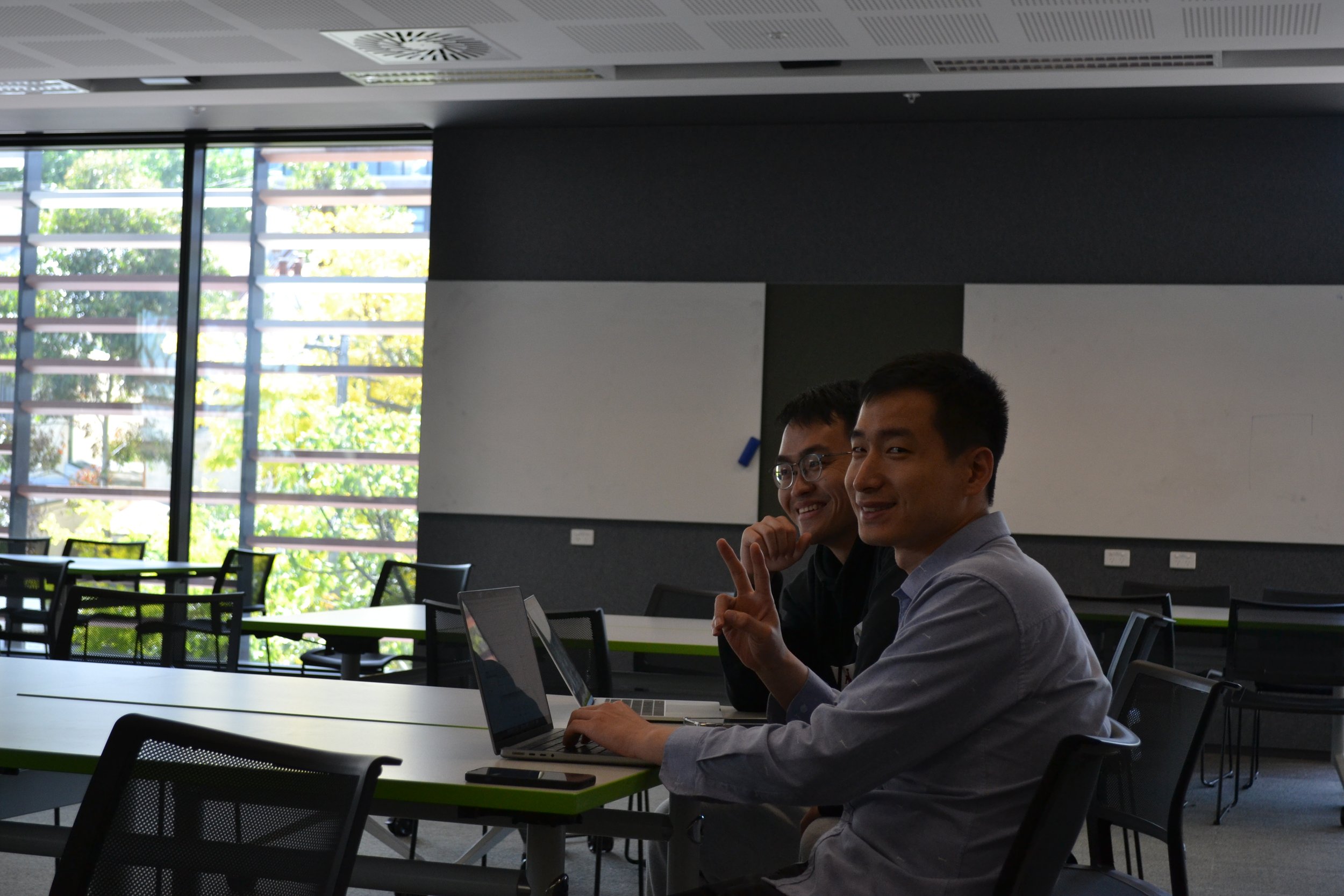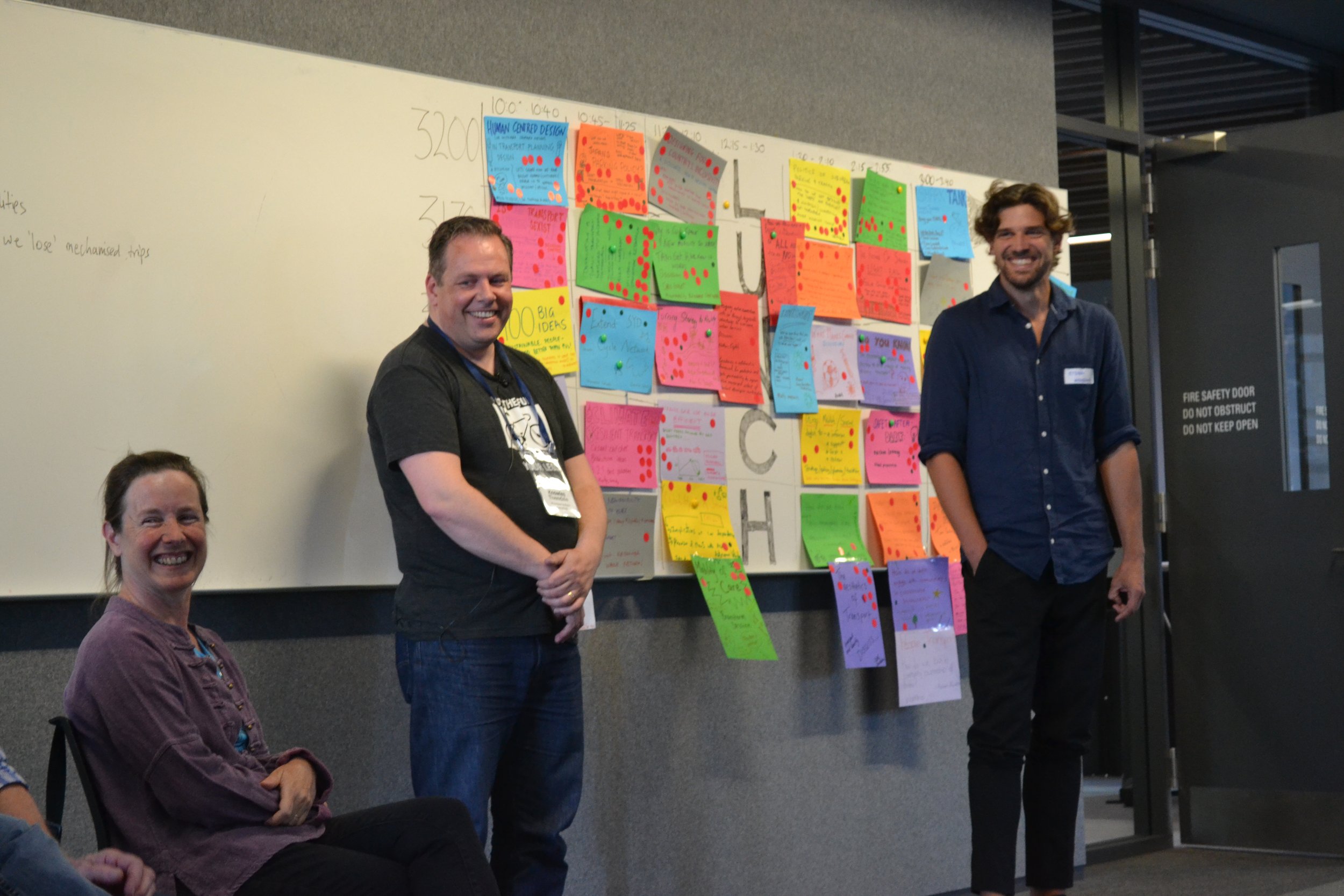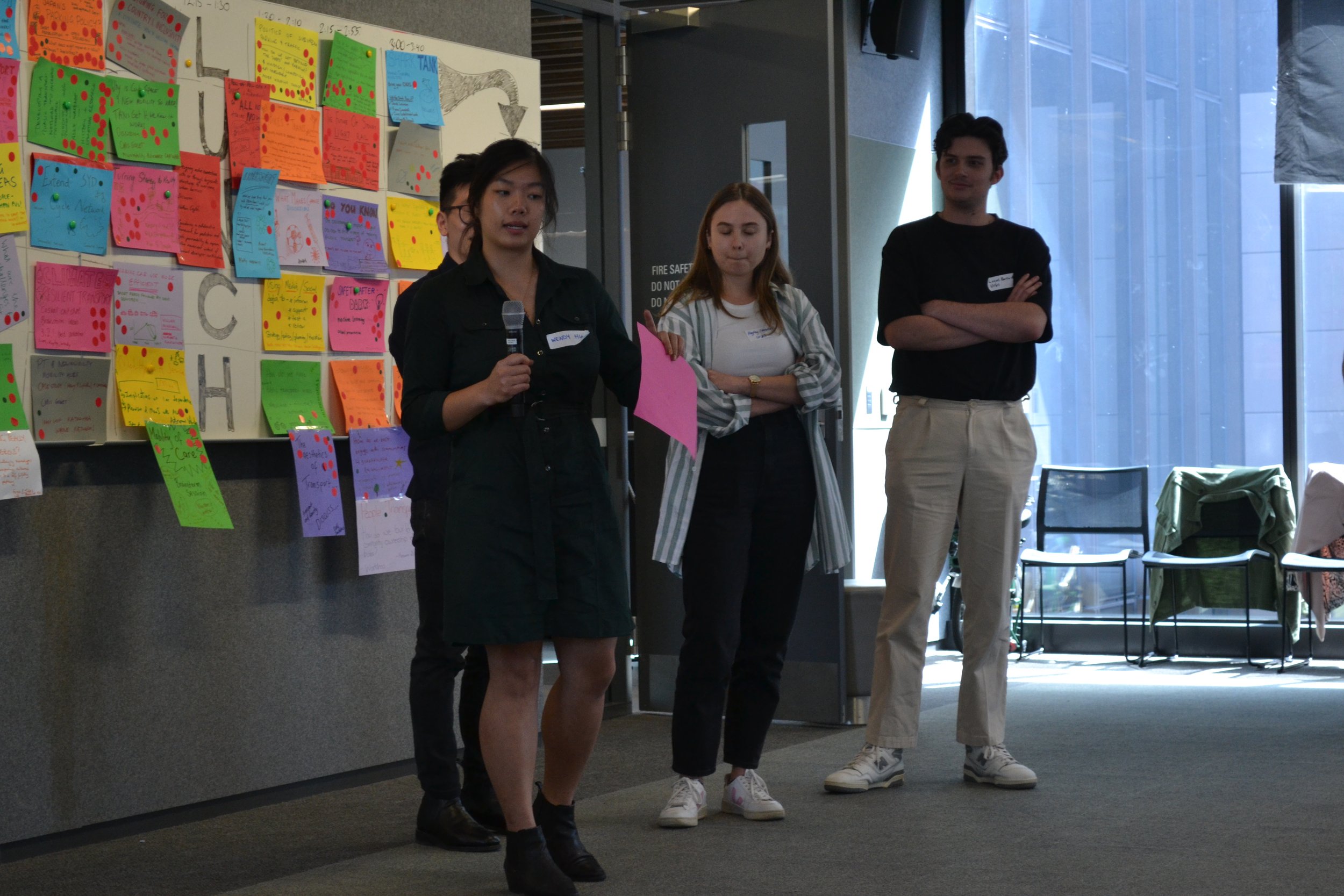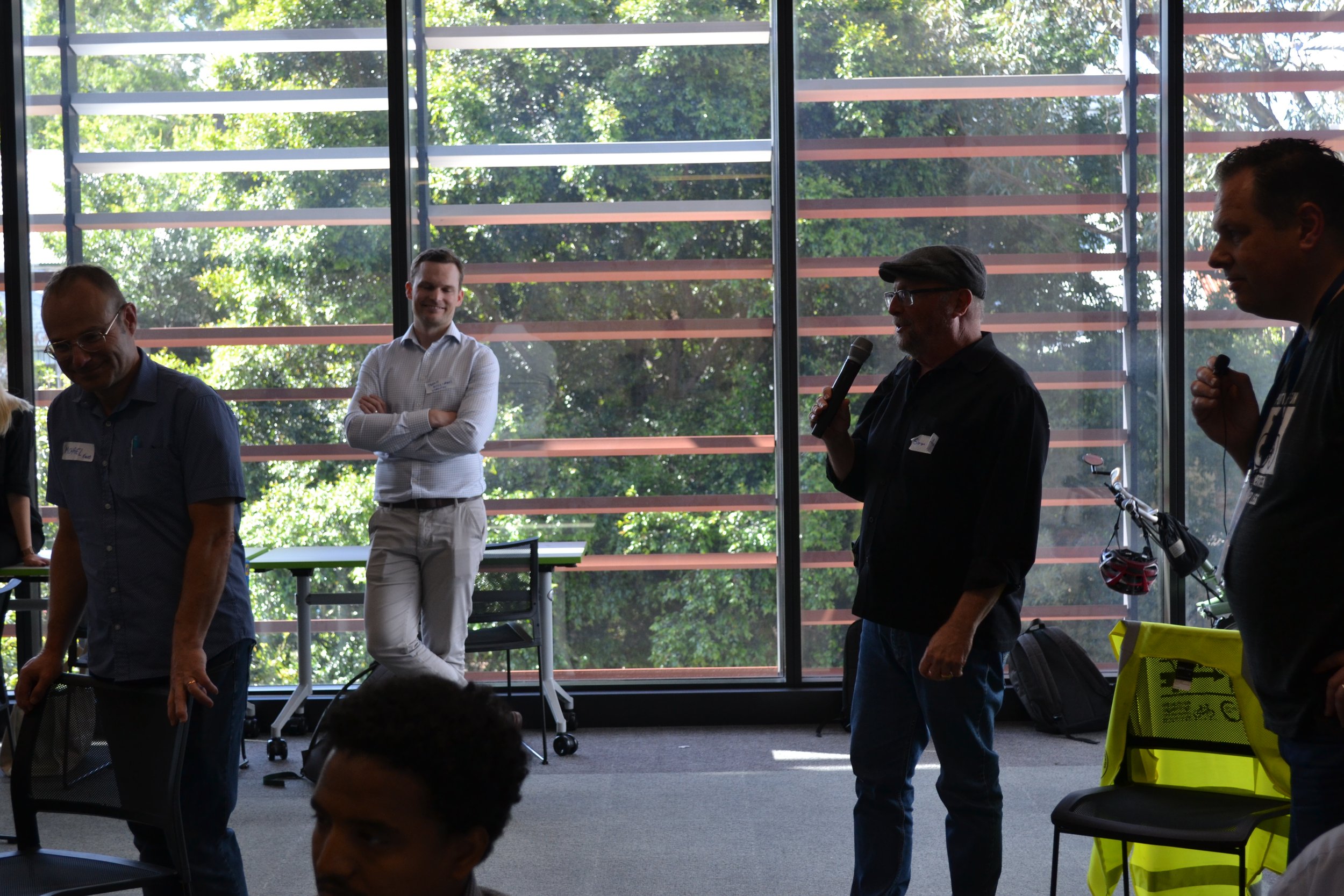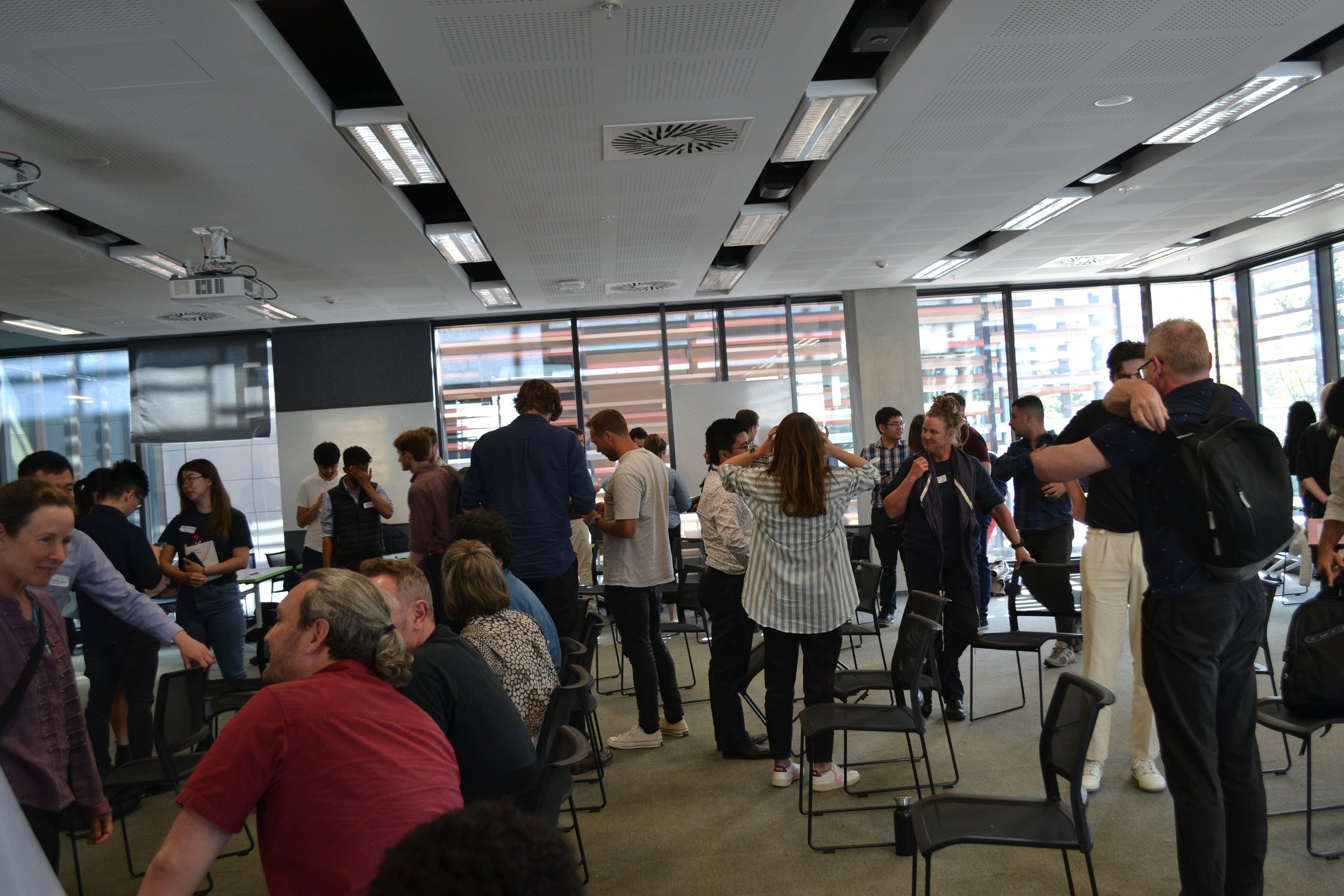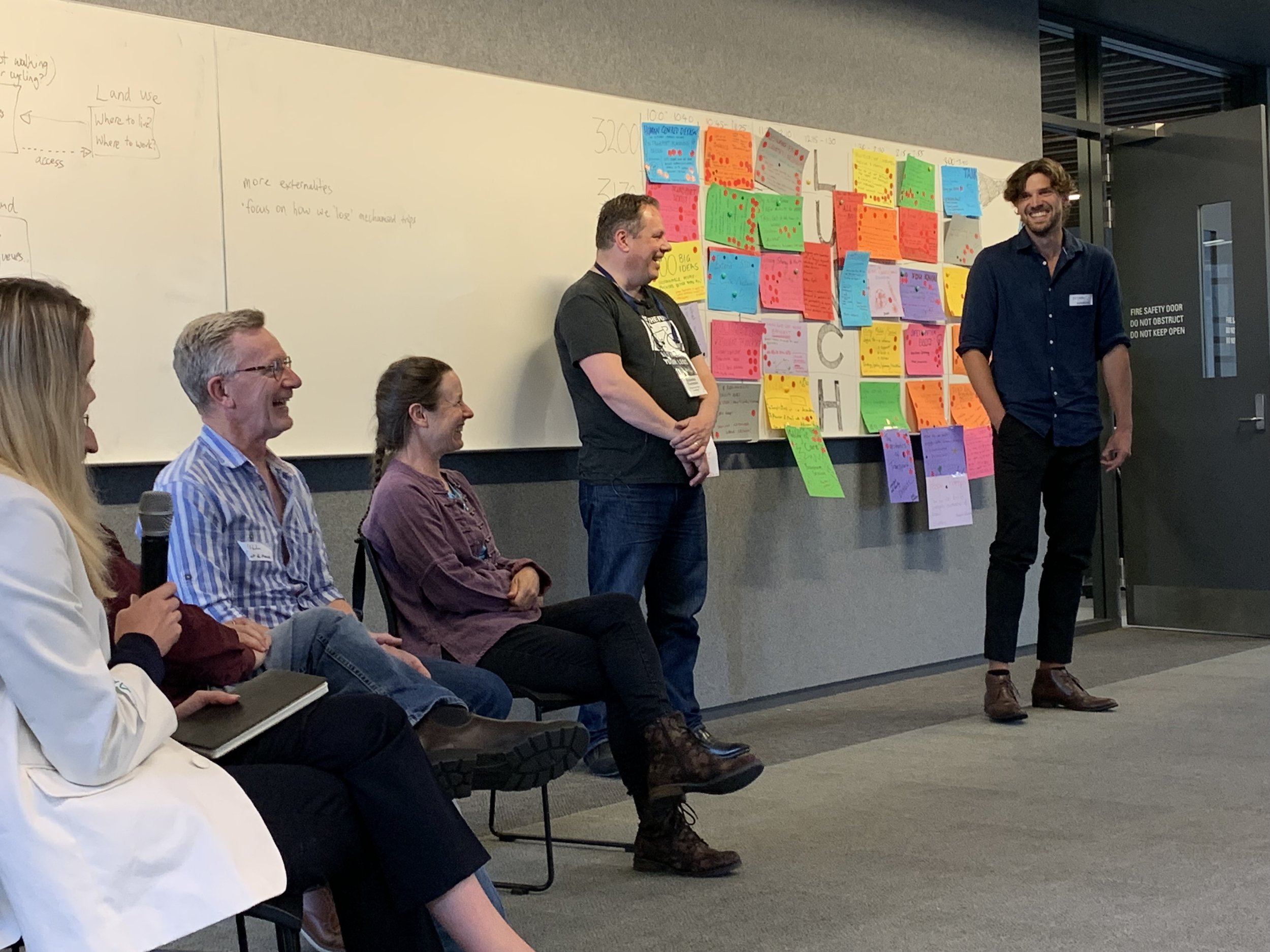2022 Sydney Sessions
Session 1
Human Centred Design
Chris O’Brien (Meld)
Session: 1
Room: 3200
Format: Presentation
Summary: Discussions about improving disabled accessibility on public transport. Played an interview video about people with disabilities. Discussed the design of train stations for people with a disability.
100 Big Ideas
Trent Williams (Stantec)
Session: 1
Room: 3180
Format: Presentation
Summary: The amount of CO2 emitted by the average Victorian car and Tesla Model S are similar. So even if we make all vehicles EVs, we still cannot reach our original target of 43% reduction by 2030.
Only when the battery electricity is about 30%, does the EV start to have an impact on sustainability.
Pinpoint for sustainable options:
Towel service at the end of trip facilities to enhance user experience
Incentivise bike and e-bike purchases to reduce costs for commuters
Safety of cycling
Education of cycling safety
Supporting infrastructures for cycling (dedicated cycleways)
Public transport information (language barriers)
Bikeway mapping/information
Pedestrian crossings at all intersection legs
Better traffic signals (priorities pedestrians and bikes)
Car free streets
Light-weight transportation
Integrate bikes with PT – take on journey
Active travel impact assessment
30km/hr speed limit local roads
Sustainability targets on shared economy delivery
Reform road rules to give ROW to pedestrians
Analysing Bike Crash Data
Fiona Campbell (City of Sydney)
Session: 1
Room: 3240
Format: Presentation
Summary: Most people feel unsafe when cycling on the road, and they feel more dangerous when they have less control. Police-recorded crash data for bicycles are not as accurate as the crash for drivers. Oxford ST has the highest reported crashes based on the data. The most popular crash types are ride-through (rank 1) and dooring (rank 2). However, dooring shows a reduced trend after 2020.
The presenter shared the bicycle crash data of Sydney city in recent years using power BI and find some bike crash report pattern change after Covid. From historical data, it can be found that right-through and dooring are the most frequent crashes. But after covid, these two events hardly ever happened again. At the same time, annual crash reports have been reduced.
Is the delivery or receipt of transport sexist?
Alison Lee (Urbis)
Session: 1
Room: 3170
Format: Debate
Summary: Topic: Is the delivery or receipt of transport sexist?
Loading zones are sexist. Jobs are predominantly done by men. The product is sexist, or the delivery is sexist. Some people said it is more of a systemic issue than transport causing it. It is a design issue.
Problems:
1. School congestion
2. Where do non-binary people fit?
Reason:
Jobs are clustered (25% of employment) and 75% of jobs are dispersed. Public transport is not designed for the dispersed job.
Ideas:
There are different lenses to look at this problem. The city is diverse we might implement the physical separation between genders. We can use behaviour change theory. People can do courses about how to perceive common space. The intersection of the topic is how effective is Public Transport? Does it provide access to all genders?
Solutions:
1. Do we need more women in high positions?
2. Encouraging active transport for school
3. Valuing more conventional economic values.
4. Dedicated parking for different professionals or maybe for genders.
5. Safety in public transport!
6. Keeping trans community kept at the site.
7. Change the behaviour of people!
What are the key challenges and opportunities for last mile micromobility logistics in Sydney?
John Parnell (Urbis)
Session: 1
Room: 3230
Format: Presentation
Summary: An informal discussion on the integration of last-mile systems was discussed.
Discussion points:
The objectives of the system
How about the impact of on-street parking?
The size of the package
Working with a business company like Amazon, for example.
What are the pains:
Parking
Congestion
Reliability
Legal law
Cost of fuel
Security
Other options include Electric bikes vs conventional bikes, autonomous bikes
The types of goods
Session 2
Climate Resilient Transport
Lucas Biurra-Hoy (Urbis)
Session: 2
Room: 3230
Format: Presentation and Group Discussion
Summary:
Problems
train always failing
station underpass flooding
non-localised technology
lack of active transport/ adaptivity to weather
uncomfortable underground train stations
signal crossing time in weather
ferries in extreme weather adaptability
Japan's Parking Policy?
Rebecca Clements (The University of Sydney)
Session: 2
Room: 3200
Format: Presentation
Summary: A short presentation and an open discussion on different cases of parking in Japan as well as the idea that might inspire us in NSW:
History of parking in Japan:
The parking laws
The garage law and street parking ban
Successful creation of off-street parking
Low-car- neighbourhood, which significantly contributes to the safety of children.
A comparison of parking in different cities
The approach proves the long-term success of a particular off-street model without street parking by encouraging people-centred streets and providing alternative modes such as public transport and active modes like walking.
The importance of giving attention to residential parking has a big impact on the liveability of the neighbourhood.
The market aspect of parking
Extend the Cycle Network
Felix Li
Session: 2
Room: 3180
Format: Presentation
Summary: Designing a new separate cycleway for leisure is relatively easier than designing a commute trip design. The one difficulty is the policy issues. Emotional consideration for people might be more critical. The presenter shared the connected cycle network in Hong Kong and discussed the possibility of establishing a connected network in Australia. He suggested that the purpose of these cycle networks is mostly for family relaxation. However, it was also pointed out that space occupation, policy and community opposition (even they have on-street parking) are all barriers to the establishment of connected cycle networks
Developing a Public Transport Network to Increase Patronage, a more Dispersed System
Alex Wardrop (Warley Parsons Rail)
Session: 2
Room: 3170
Format: Group Discussion
Summary: How do we make the Sydney Train network more attractive? Do we need a connection between the train lines? Should we improve accessibility measurement to include transfer penalties? Transport should carry a greater number of people; public transport service is straightforward and does not serve all. IT should increase frequency. It has low connected services.
Solution:
Use connectors to collect people to transfer to places.
More interchanges instead of more bus routes.
Design a connected public transport network
Expand the metro area to provide access to suburban areas.
Less trip chaining and more direct transport
Dynamic service frequency!
Effective transfers (Hong Kong and Singapore)
Population and transport go together. What should be an idea ideal form? Even if we build high-density, are they going to be affordable?
Low-density sprawling is generated. Will the employment be dispersed?
Patronage in the city 40% public transport and 60% private cars?
More people working more at home but at the weekend more people are out there so the workers in the CBD are more at the weekend.
Even if the services are cancelled in the peak period in one of the best-connected lines.
If there is a metric that how accessible the places are?
Map hotpots of low performance of an area because it is causing low employment levels due to less connectivity.
The utilitarian cost-benefit calculation is that we are reinforcing the divide and disadvantages.
Ultimately, we can measure accessibility between all OD pairs in a city and rearrange the network to effectively serve every corner of the city.
Session 3
Turning Strategy into Reality
Alan and Joseph
Session: 3
Room: 3180
Format: Discussion
Summary: Good strategies:
How to build support
Clear action
No passive voice
Consulted and supported
Plain language in response to legislation
Who to implement the strategies?
Pilots
The qualities of a good strategy are discussed, which are, how to build support, clear actions, no passive voice consulted and supported plain language, and in response to legislation. In addition, pilots in the pipeline have been proposed as an important way to implement the strategy.
Designing for Country and Inclusivity
Nancy Zhuang (Arcadis)
Session: 3
Room: 3200
Format: Presentation
Summary: An open discussion on planning for the country:
How are business cases run? Are they people-centric?
What is the framework for planning and designing mobility infrastructure?
The consultation with the community focused on the inclusivity of the transport system.
What are the social outcomes of the transportation infrastructure?
What do Aboriginal people value?
The principle of design for a country will finally be good for everyone.
Making Car Use More Efficient
William McDougall (Movement and Place Consulting)
Session: 2
Room: 3230
Format: Presentation
Summary: Cars are the major problem of congestion and emissions. Mentioned congestion pricing and car sharing. Mentioned control of the right to drive to reduce traffic. Reserve parking to reduce the driving trips to the city centre.
Mobility of Care
Kelly Saunders (The Univerity of Canberra)
Session: 3
Room: 3240
Format: Discussion
Summary:
Mobility of care should be a type of mobility purpose besides leisure, work and education. Mobility of care is time-consuming to send kinds. The children's independent mobility, like cycling, is also a problem. Ideal mobility of care is more about infrastructure support. The community can also provide a friendly soft environment for the mobility of care. The conception of this mobility mode is for everyone, not for a single people group. The council need to have the concept of mobility of care. The exact demand is also an important factor. How to format this kind of service in a specific way to help the parent to send their kids to school. Some argument is that don't make the model too complex, and also need to consider the budget. Some surveys to know the community attitudes and demands are considerable. To notice the reality of people's behaviours.
Session 4
What are the opportunities for dynamic change?
Jasmine Sinclair and Sunny Hong
Session: 6
Room: 3180
Format: Discussion
Summary: The value of transport methods changed when the pandemic spread. Use these opportunities for dynamic changes. Many things are experimental but everything almost turns back after the pandemic. Moving forward, reflect on the difference between equal and equitable modes of transport. How can we support a best-practice transport reality?
Using Media and Social Data
Keith Forbes (Streem)
Session: 4
Room: 3230
Format: Discussion
Summary: Streem delivers comprehensive and real-time media monitoring, insights and reporting across Print, Online, TV, Radio and Social media as it happens. Streem’s one real-time media intelligence platform helps us stay on top of online, broadcast, social and traditional media as it happens.
Streem is the ANZ market’s leading challenger media intelligence group, delivering comprehensive and real-time Print, Online, TV, Radio and Social media monitoring, insights and reporting. From its market launch in 2017, Streem has grown rapidly to service some of Australia’s largest corporate and government organisations.
Cycling Parking Spaces
Scott Przibella (Transport for NSW)
Session: 4
Room: 3710
Format: Discussion
Summary: Idea: We should have more bike spaces
Motivation: Last-minute connectivity is an important aspect to reduce private car use. Public transport should have indoors and outdoors for cycles. Public transport should have dedicated space for cycles. The taxi should also accommodate bikes. The train stations should have dedicated cycle parking areas to motivate people to use public transport.
Conclusions:
Cyclists will park where it is convenient
Bike parking is a key part of station access
A variety of parking options should be considered
Walking, Park on a ride is still important
Pedestrians and Bikers should be separated in almost all instances
The Politics of Suburbs Parking and Traffic
Graham McCabe (Urbis)
Session: 4
Room: 3200
Format: Discussion
Summary: An informal discussion on topics including:
How do we get beyond the need for parking
Who is making the decision for car parking?
What is the community's vision?
What should be the evidence?
What is impacting driving behaviour and the influence on parking?
The influences of financial institutions on the planning of parking spaces.
The opportunities and challenges are considered in light of existing case studies.
The strategic plan for parking along with other transport infrastructures.
Parking and traffic generation.
The Aesthetics of Public Space
Kelly Saunders (The University of Canberra)
Session: 4
Room: 3240
Format: Discussion
Summary: The aesthetics of public transport facilities have an intangible impact on user comfort and travel experience. However, aesthetics is often overlooked when designing public spaces. One particular aspect is the type of building materials. For instance, one of the Paris train stations has a “cold” style which creates a more stressful atmosphere. Wooden benches were installed around the station to give a warmer perception, improving the general user experience and emotions. This session raises awareness about aesthetic designs and their impacts, especially in public spaces such as train stations and tunnels.
Materials and public safety: less steel more timber; More natural lighting (use of glass materials)
Colours: ecological materials, signs of safety, mental easiness
Shapes: wayfinding
Session 5
Do We Consider the Environmental Impact of our Transport Mode Choices?
Hal Hissey (RPS Group)
Session: 5
Room: 3180
Format: Informal Discussion
Summary: Attendees gathered to reflect if individuals consider the environmental consequence when choosing to drive instead of using public transport and active transport.
Caring for children introduce time limitations that impact a person’s decision to drive.
The preference of the majority may impact individual decisions.
Different modes will give people different feelings about safety.
Parking issues and distance influence mode choice.
What is the opportunity and limitations of incentives and disincentives when promoting active transport.
Weather will impact on some level but it will not be the deterministic element.
Some incidents can change individual behaviour long term.
Sydney’s Light Rail
Joseph Giang, Chathura Perera, Helen Monk (Transport NSW)
Session: 5
Room: 3270
Format: Discussion
Summary: How should we improve Sydney light rail? Is the light rail better than the bus?
The presenters asked a selection of questions.
1. What is your experience of Sydney light rail? The light rail corridor is limited to a small residential area. It is not accessible to many people. Some people prefer it because it is fast, frequent, and comfortable.
2. Are you a frequent user of the light rail or bus? Which one? Both? The second question categorised the audiences into three different categories.
3. Are you a frequent user of light rail? People who use both buses and light rail, are most frequent users of light rail
4. If light rail and bus were both offered to your destination with the same travel time and the same cost which, would you prefer? Or are you different?
It is seen that given the light rail and the bus are offered to your destination with the same travel time and the same cost, people are more likely to select the light rail.
5. If your preferred option from the Q4 tool 5 minutes longer to your destination, would your answer change? People would prefer light rail even if it is 5 Minutes longer to the destination.
6. If your preferred option from Q4 cost 2$ more in fares per week to get to your destination, would your answer change? People are most likely to change the mode.
7. In what way is light rail better than trains? Trains are fast and the network is extensive. Light rails are built across the rapid bus routes to attract more riders.
8. In what way light rail is better than cars? Light rail is better than cars because people do not need to worry about parking. It covers the tourist attractions of the city. People with mobility issues can access the light rail. It is convenient for people who cannot drive including kids, older people, and people with disabilities.
Why Do Our Models Fail?
Darrel Veryard (VLC)
Session: 5
Room: 3200
Format: Discussion
Summary: Discussion about why the existing traffic model frameworks do not give us the answers we want. Two main model classes are the travel demand model which interacts with the regional land use and demography, and the road demand (traffic infrastructure) model. An argument for better modelling is to include more externalities in the prediction when evaluating the impacts of changing travel demand and land use from a project. Another point is that irrational behaviours are difficult to be captured in models, for example, destination choices may be affected by different sets of factors (some people care about distance while some only care about the service quality etc.). Another challenge is to include new factors in a model, for example, new data on urbanisation, the pandemic, and remote working. New factors eventually lead to more uncertainties in forecasting, and the accuracy decreases over a long time horizon. It is critical to review the model's purpose and interpret the results carefully in the given context.
Safety After Dark
Elizabeth Muscat (Cardno)
Session: 5
Room: 3230
Format: Discussion
Summary: To deal with the physical threat of danger and the psychological perception of fear and danger, Elizabeth and her group tried to find a way to measure passive surveillance in order to increase the passive surveillance index. They trained a prediction model to scale live experiences to score and correlated it to passive surveillance using a regression model. The results indicated which parts of the city need target interventions for decision-makers. Also, the model can be implemented in a navigation map to choose routes between longer but safer routes and shorter but unsafe routes.
Challenge: The physical threat of danger and psychological perception or fear of danger particularly at night time.
Solutions: empowering infrastructure; empowering women Measure of safety: passive surveillance index Implications: wayfinding app (as a cost factor for route choice), informing planned decisions, assisting decision making for regional development, NSW digital twin
Method: captured lived experiences (survey scores 0-10); survey scores are measured against physical data at survey locations; spatial regression is used to predict index value at other locations.
Factors: opening and closing time of businesses, vehicles and pedestrian counts, key land uses, lighting, etc. Test location and subjects: Paramatta; women carrying camera Regression shows land use most important
Session 6
Shark Tank
Knowles Tivendale (Movement and Place Consulting)
Session: 6
Room: 3200
Format: Q&A
Summary: Will the Shark buy it? Judges included David Levinson, William Mcdougall, Clare Easterbrook-Lamb, and Fiona Campbell.
Topics:
Autonomous vehicles (AVs) for public transport:
what type of services? On-demand?
The purpose of the trip? for anybody?
The cost of the vehicle?
The location of the service.
Free public transport
Improving transport equity
Who is benefiting from it?
Do people value public transportation when it is free?
How is the induced demand calculated when public transportation is free?
Why not support poor people with money rather than invest a huge amount of money in free public transport?
Mobility budget
The main idea: what do we do if a company give us a specified amount of money to use any transport mode we want but to cars?
How would you spend $100 on transport- excluding motor vehicle use.
Bike repairs, Opal, car sharing, E-scooter, MASS, running shoes, train fares are all options that could be included under this scheme.
The business plan
The benefit for the employee
Dead Rail Routes, Conversion, and Reuse
Tim Coen
Session: 6
Room: 3240
Format: Presentation
Summary:
3100 km dead rail in NSW.
Policy barriers to converting dead rail lines.
Turn abandoned rail links into rail trails.
Increase accessibility and lift quality to local active travels.
Astronomical Transport, what transport issues will the planetary colonies face?
Joseph Yurisich (Transport NSW)
Session: 6
Room: 3710
Format: Presentation and Imagination
Summary: Are we going to face Moon/Mars Colonization someday?
Moon
Vacuum
Temperature
Low gravity
Dust
Topography (Uneven surface)
Where will people live?
Mars
Thin atoms
Low temperature
High wind
Earth
Heat waves
How can people travel on Moon or on Mars given this difference in weather conditions mentioned above?
Answers:
Flying car/spaceship?
Underground
Train
Subway walking
Indoor cycling
Canal
Space Elevator
Multistorey Walking
Micro-Mobility
Dorm Cities across mars are connected by canals. Mars has liquid water. We can apply transport modes of the earth on these planets. Public transport is based on the workspace. People will be working in mines to build a large transport network.
Autonomous Technology
Jack Wang (Stantec)
Session: 6
Room: 3230
Format: Discussion
Summary: AV technology is ready, the focus is how well people will recognize it as a way to travel.
Equity vs Equality
Sunny Hong (Stantec) and Jasmine Sinclair (Transdev)
Session: 6
Room: 3180
Format: Discussion
Summary: Different governments are responsible for different problems. Which trade mode should the government invest in is a matter. Basically, this is a different objective function of resource allocation to a non-even distributed demand.
